
I remember Lenny Fritz vividly. He was a big dude who looked intimidating and whose peripheral manifestation evoked possibilities of an outlaw biker or a club bouncer to those who didn’t know him.
In actuality, Lenny was a fun, cool, extremely creative and hilarious individual. He lived down the street from my family’s house on Springwells Street in Southwest Detroit.
His family, the Fritz’s, grew up with my family, the Place’s. The Fritz’s lived at 2655 Springwells Street and my family lives at 2606 Springwells Street. Lenny was a popular figure around the neighborhood due to his good nature and artistic abilities.
Graciously, his mother Mary Anne Fritz and sister Patty Saenz (pronounced ‘signs’) sat down with me recently at Patty’s home Downriver to discuss the uniqueness of Lenny and the enduring impact of his work.
Biography

Lenny was the middle child. He had an older sister Patty and a younger brother Eric.
“Lenny and I were Irish Twins,” says Patty, “We were born one year and five days apart. Lenny was born on June 27th, 1967 and I was born on June 22nd, 1966. He passed away in September 2012 from cancer. June 27th, 2017 would have been his 50th birthday. I miss him so much.”
Lenny went to school at St. Gabriel’s (8118 Vernor) and Holy Redeemer Catholic High School (1721 Junction) in Southwest Detroit.

Mary Anne tells us more about Lenny.
“Lenny graduated Holy Redeemer in 1985 and went on to WSU. He worked a variety of odd jobs around the neighborhood, including being a janitor at St. Gabe’s and grass cutting at Holy Cross Cemetery. Lenny’s true passion though was writing and illustrating comic books.”
“Lenny was even a Detroit Firefighter for a little while until life took him elsewhere. He was playing basketball in flip-flops in his backyard one day with the guys when he stepped off the curb and broke his ankle. As a fireman, he had the fastest time in doing the stair running exercise drills with 50-pounds of equipment on.”
“Lenny was a regular customer at John K. King Books, a great big bookstore a few miles from the house.”
Exclusive Interview with John King
Interview with JOHN KING, owner of John K. King Used & Rare Books in Detroit
“He also used to hang out at K-Andy’s Bar (8736 W. Vernor) and Bucks Good Eats on Dix, it’s now the Mexican restaurant Mi Pubelo (7278 Dix). Many of these places factor into his work.”
“On Thursday nights, he used to head up to Beacon Bowling Alley (6735 W. Vernor) and go bowling with his Dad, Uncles and cousins. Detroit was the bowling capital of the world back then.”
“Lenny was 6’3”, 250 pounds and at one point he had a Travis Bickle type mohawk that he got from Ralph the Barber. He also sported a ‘To thine own self be true’ tattoo on his forearm that he, Patty and Eric all have.”
“Lenny was great friends with Father Anthony Bologna from St. Gabe’s. Fr. Bologna was legally blind and Lenny would drive him around and take him shopping. They would also go to Sunday dinner in St. Clair Shores at Fr. Bologna’s family’s home. He would pick him up at St. Gabe’s in Southwest and drive him out there. While they were out, a trip to the neighborhood grocery store to pick up Fr. Bologna’s favorite Progresso soup was always a must.”
“Lenny’s dad, known as Lennie, was a Detroit cop at the 7th Precinct, located at Mack and Gratiot near Eastern Market. His dad would often come home with vegetables and fruit from Eastern Market vendors and nuts from Rocky’s. He was a cop from June 1967 to September 2007. He finished the police academy on the day Lenny was born. Many of his true tales as a cop are woven into Lenny’s writings.”
“About a month after Lenny was born, the Detroit Riots erupted. The National Guard was camped at Patton Park, Dix and Woodmere Street, tanks and all, right down the street from us.”
Patty & Mary Anne Move Out of Southwest Detroit

The neighborhood used to be great but it changed quite a bit over the decades and became very dangerous with gangs, burned down houses, graffiti, drugs. It was time to leave. Patty moved her family out of Southwest in 1998 after a 10-year-old kid broke into their car.
“My husband Reuben caught a little kid breaking into our car one day,” says Patty, “We called the police but they never came. So, after a few hours, we went down to the kid’s house and it was some kind of big drug dealing house. His parents just laughed at us, they didn’t care. They didn’t care at all, they didn’t even get up. At that moment, I realized we needed to move to get our baby son Ricky out of there.”
Mary Anne moved out in 2004. She is now living on the island of Grosse Ile.
Lenny Goes to School

Lenny excelled academically and was a very well-educated man. In 1998, he received his BA from Norwich University.
Then in June 2002, he got his MFA in Creative Writing from Western Michigan University. A few of his plays were produced by the Drama department. His final project was entitled ‘Wet,’ which is street slang for a joint of marijuana dipped in PCP.

Also in December 2002, he received his MA in English and Rhetoric from Wayne State University. He was also on staff at Washtenaw Community College and Owens Community College (Toledo) teaching English and Film History. He later secured a tenure position in the English department at the University of Toledo.
Lenny’s Connections with Chuck Palahniuk, Stan Lee & Charles Bukowski
Mary Anne tells us about some of Lenny’s interesting literary and comic connections.

“Lenny was a huge fan of author Chuck Palahniuk (pronounced paula-nick) and he wrote to him once. Chuck surprisingly wrote back and they maintained an infrequent correspondence over the years. In Lenny’s copy of FIGHT CLUB, Chuck wrote “To Lenny-May you never be perfect and complete…” and in SNUFF, Chuck wrote “To Lenny-May your every money shot bring a standing ovation.”

“Lenny submitted artwork to a contest that Stan Lee was a judge for. Stan Lee picked Lenny’s submission as the winner and Lenny got his caricature done by Stan Lee in the Spider-Man Sunday comic strip along with the original signed Stan Lee comic art.”

“Lenny and Charles Bukowski were writing buddies in the 1980’s-90’s on and off.”

“After Lenny passed away, I became the recipient of dozens of boxes of his letters and writings.”
Lenny the Writer

Mary Anne tells us about Lenny’s writing habits and contributions.
“There was a network, a brotherhood support system of writers and comic book people that Lenny belonged to, a sort of feedback loop that helped each other out in critiquing each other’s work.”
“Lenny wrote and drew constantly, daily. He generated copious amounts of notes, most of which are written on scraps of paper and napkins. We have boxes full of his notes and sketches.”
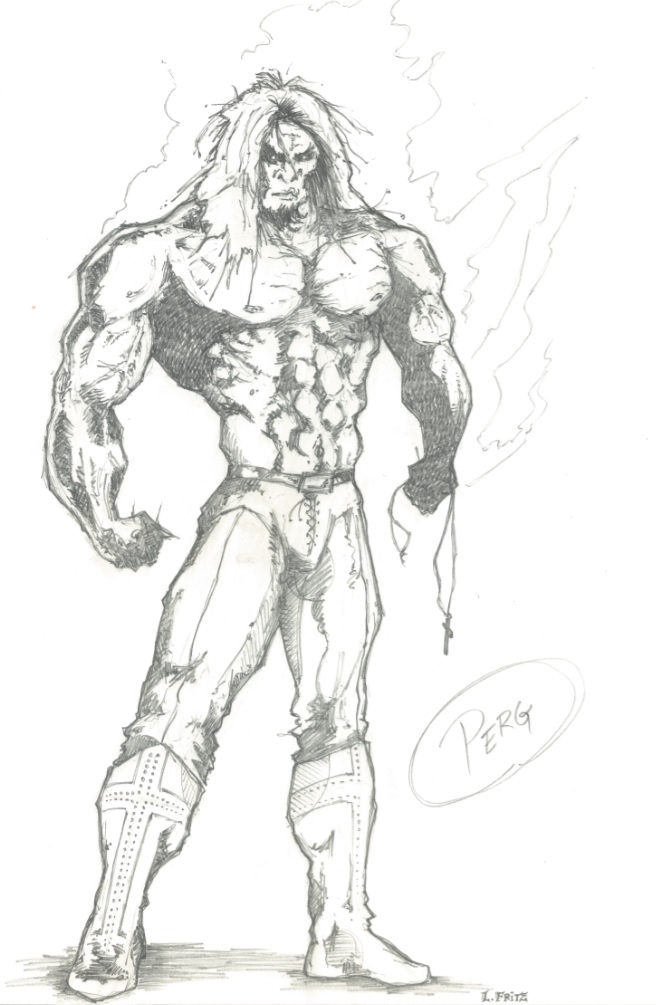
“Lenny did most of his writing while sitting in a recliner, keyboard in his lap, in his first-floor bedroom on Springwells. While driving, he used a voice recorder to capture his thoughts while they were hot and fresh and would later transcribe them into his computer. I still have his original tapes.”
“While working on his Masters of Education, Collegiate Sports Administration at Wayne State University, Lenny did an internship at the University of Michigan Sports department and out of that grew his long-standing relationship with U of M. Lenny published Krater Quarterly, a nationally distributed literary magazine, from Block M Press. He wrote for the U of M Dekers Blue Line, the booster club for UM hockey. “Deke” means to fake out a hockey goalie. Lenny also did illustrations for U of M which were sold as officially licensed material and merchandise.”
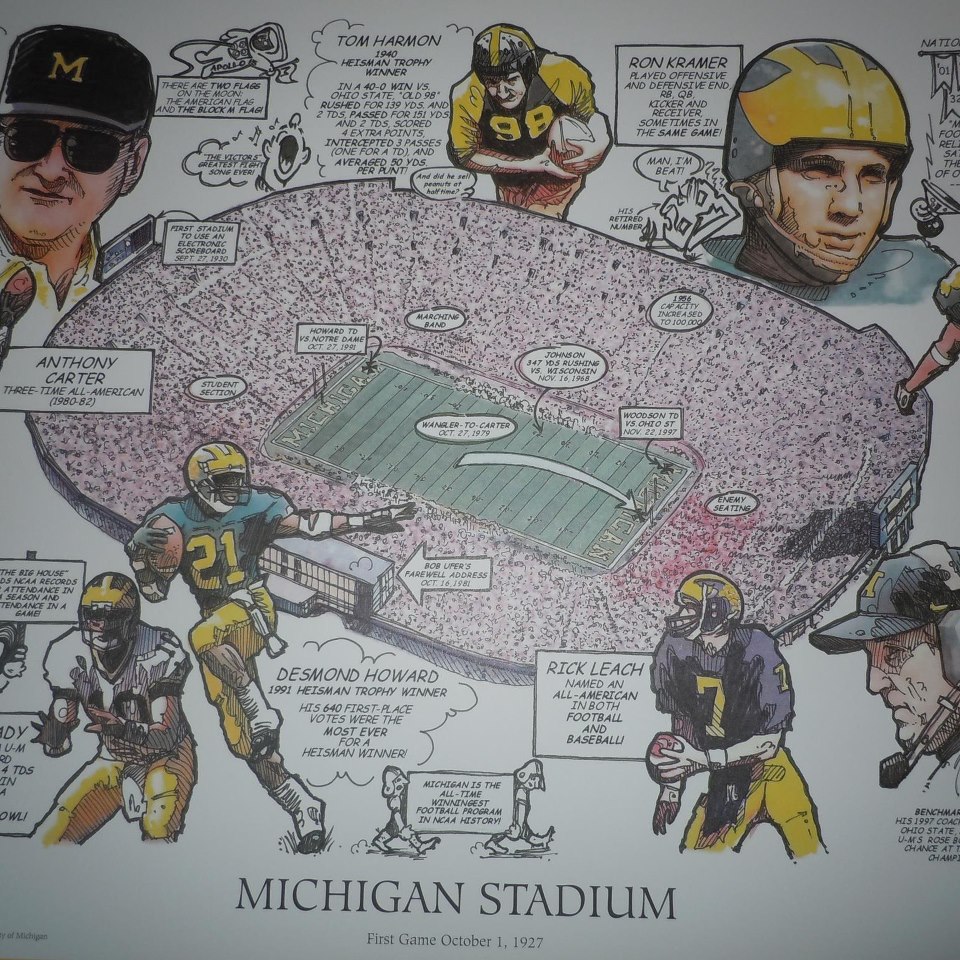
In Nine Kinds of Pain (2011) by Leonard Fritz

‘In Nine Kinds of Pain’ is a book written by Lenny Fritz. I’m an avid reader with a 2,000+ volume personal library and I’ve never encountered any other book like this one in terms of distinctive styling, unclassifiable-ness and comic book mingling.
Here’s the synopsis from New Pulp Press:
“Baby. She knows how to play the streets of Southwest Detroit. But when her boyfriend entangles her in his life of criminal treachery, she’s forced to go underground to stay alive. Her pursuer? The mysterious Tall Black Man, a cold-blooded dope dealer who believes she’s ripped off his stash. Baby flees to presumed safety in the arms of Father Anthony Costa, a drunken, delusional priest, and Dallas Sharper, a Detroit cop gone off the deep end; she hopes to buy more time to figure a way out. Throw into the mix the Canadian Mafia, some killer cops, and an unyielding city, and you have just another week in the Murder Capitol of the World. IN NINE KINDS OF PAIN is a fast-paced, beat-of-the-street story of torment and redemption, of failure and salvation, that proffers crime fiction at its best.”
The book centers around a group of morally conflicted characters and takes place entirely in Lenny’s old neighborhood of Southwest Detroit. The narrative is interspliced with comic book panels illustrated by Lenny, giving it a graphic novel-eqsue feel. The writing is so good and the situations so bleak and characters so grim that it’s hard to put the book down. After finishing it, you immediately want to re-read it.
This book is not for children. This book is not for people with faint hearts and rosy visions of idyllic settings. This book is for people who want to read about gritty characters and thinly veiled true-life stories written in Lenny’s own distinctive style. The story is not linear and its told in short, violent vignettes interspersed with ‘Here is Wisdom’ narration guides for non-Detroit natives.
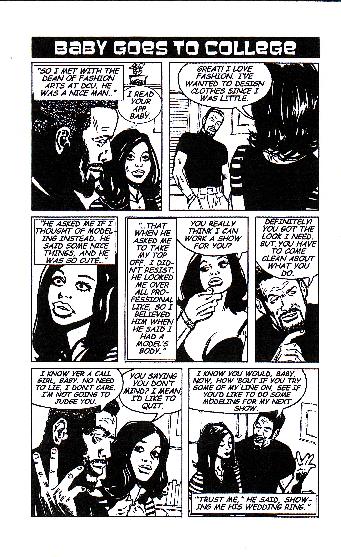
Some of the characters include: Baby the prostitute, Father Costa the delusional alcoholic Catholic priest, Dallas the mentally unstable Detroit cop, Tall Black Man the dope pusher, Jimmy Bible the redneck cop, Frankenstein Anson Davis, etc. All characters are locked into an existential bloodsport of survival of the fittest.
The characters in the book essentially equate being a resident of Southwest Detroit to being an inmate at a prison. Each character is trapped in their own personal prison and all characters are trapped inside the prison of Southwest Detroit, where it is impossible for them to escape from. Escape is impossible because after living there, they cannot function in the outside world.
Living in the nebulous purgatory of Detroit’s Southwest side has made them crazed and ghostly, it has created a unique form of acute insanity, a permanent deranging of the soul, which cannot be gotten rid of. By existing in the realm of Southwest, they have each been robbed of their humanity and turned into quasi-monsters. Remember, this is just a book. Lenny was a die-hard Detroiter at heart.
I imagine that the title ‘In Nine Kinds of Pain’ refers to the multi-dimensional realms of suffering you can live in simultaneously. There were 9 Circles of Hell in Dante’s Inferno and there’s 9 Kinds of Pain in Lenny’s Southwest Detroit.
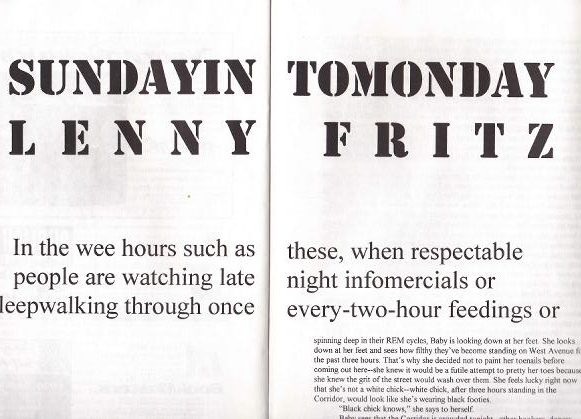
Mary Anne offers her recollections of Lenny’s book.
“Around 2000, Lenny started the initial idea for ‘In Nine Kinds of Pain’. It wasn’t titled until after he finished the manuscript.
“90% of the material in the book involves real people and true stories from the neighborhood with some minor embellishments.”
“The book was published in October 2011 by New Pulp Press, a publishing house which was based in Colorado at the time. After its release, Lenny did a few book signings in Ann Arbor & Detroit, however, shortly after its release, he was diagnosed with esophageal cancer in May 2012.”
“Lenny and I lived in Monroe at the time of his illness. Lenny was a professor of English literature at the University of Toledo. He had just completed spring semester classes mid-May and was diagnosed with esophageal cancer at the end of May.”
“While he was in ICU at the University of Toledo Medical Center and unable to speak, we would steady a pen in his hand and he would write in a binder to communicate with us, never once needing to look at the page as he jotted. His body was collapsing but his brain was still true and clear.”
“Lenny tragically passed away on September 13th, 2012. It was an overwhelmingly fast death and still difficult to deal with at times. We just want to keep his memory alive. He was 45 years old when he died.”
Throughout his work, Lenny offered many haunting premonitions. His 2000 thesis for Wayne State alluded to September 11th over a year before it happened. And in his book, he spookily alludes to his own death a few times.
Lenny won a Fireball Award from Spinetingler Magazine for having one of the 25 greatest opening lines in crime fiction. The opening line is, “This is Detroit, so welcome to the jungle.”
Throughout the book, Lenny pays illustrative homages to Daniel Clowes, Margraret Kilgallen, Jorge Longaron and Alden McWilliams. In a separate project, Lenny illustrated the cover for Jake Hinkson’s book ‘Hell on Church Street’.
Overall, ‘In Nine Kinds of Pain’ is a fascinating read and would make a great movie. The film would have to be raw, gritty and shot on location to do it justice.
Although it has never been discussed by anyone, I am labeling Lenny’s unique work as the beginning of ‘Detroitica’. Detroitica will henceforth be defined as a literary sub-genre of crime noirs which contain elements of the gritty, erotic, surreal, underworld, criminal and insanity specifically taking place in and around Detroit. The genre was inadvertently created by Lenny Fritz.
Lenny’s Unpublished Book: ‘You Can Kill Anyone’

Mary Anne tells us about some upcoming projects.
“Lenny was originally going to do a trilogy and he wrote a second companion book called ‘You Can Kill Anyone’. The book is about Jimmy Bible, a character mentioned in the first book.”
“Lenny described Jimmy Bible as “one of those ‘redneck cops’ who can’t seem to draw a line between reality and the video game Grand Theft Auto.” The book is about Jimmy Bible spiraling down but becomes a love story involving Jimmy Bible, Plain Jane Dunleavy, Spanker and other characters.”
“A company called 280 Steps based in Oslo, Norway was going to publish the book in November 2015 but they never did. It was scheduled for release but kept getting delayed as ‘to be published’ and now the company no longer exists. Fortunately, I own the intellectual property rights to all of Lenny’s work and we will be actively pursuing the publication of this book in the near future.”
“Lenny also has several short stories that we are going to compile into a book and publish.”
Fond Memories of Lenny & the Fritz’s
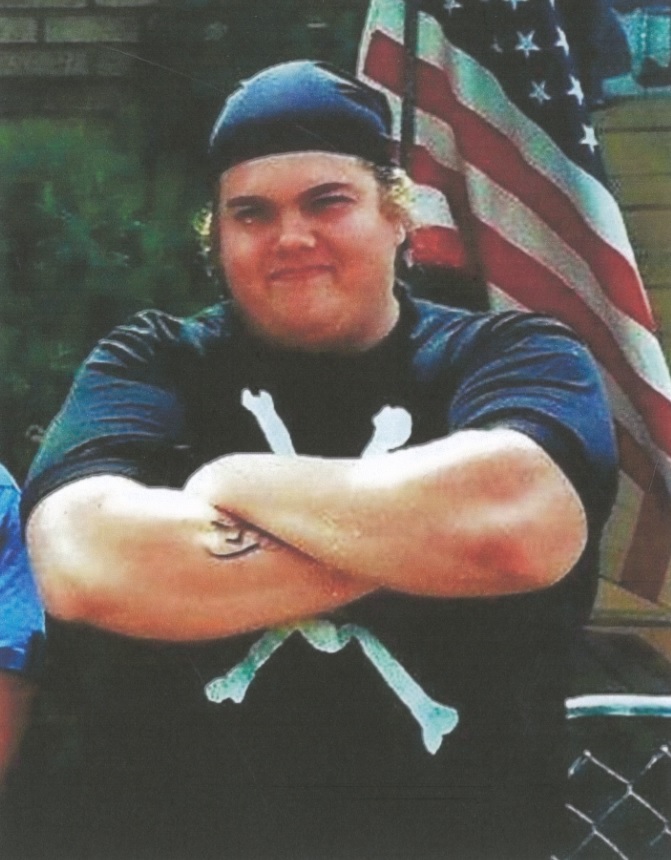
Lenny’s mom Mary Anne sold my dad his first car in the 1970’s and Patty has my Aunt Mae’s rosary.
My Aunt Mae & Aunt Dae, two hilarious Italian sisters (real names Amelia & Adele Miglierino), also lived down the street at 2576 Springwells. They had glass bowls of stale candy corn around the house, a dog named Rocky and they used to argue frequently and call each other “Pep” and “dog in the manger”. They used to give my cousin Tim and I coffee and crackers starting when we were 4-5 years old. Coffee, cream, about 20 spoonfuls of sugar poured in from the restaurant-style sugar jar and we would dip saltine crackers in the foul concoction. My Aunt Dae wore a hairnet, terrycloth shorts, slipper socks and would wander the alleys of Southwest Detroit picking dandelions and collecting discarded toys and assorted trinkets. It’s a miracle she was never mauled by a pitbull or bopped on the head. Lenny and his family knew them well.
Patty recalls some fond memories.
“Your Grandma used to babysit us. I remember she would make pancakes in various shapes for us. Then years later, I babysat Renee when your Aunt & Uncle lived over on Wendell. Lenny would do these elaborate chalk drawings with her on the sidewalks.”
“Every summer, our whole family would go to Camp Dearborn in Milford for 3 weeks. It’s a tent village of large wood frame tents with canopies. The tents have beds and bunk beds, they’re very spacious and we would rent 8-10 of them for 100+ people. We have a big family, I have 35 first cousins. While we were at camp, your Aunt Sue “watched” our house for us (aka: she threw parties).”
“At camp, Lenny would organize football teams, The Fritz Blitz v.s. The Fritz Connection. He made t-shirts for the games at Sheridan Sport Shop on Vernor Hwy near our house. Archery, swimming, rowboats, etc, the summer dream. We had so much fun.”
Christ Recrucified Two Thousand One AD

Lenny’s master thesis ‘Christ Recrucified Two Thousand One AD’ is 244 pages long and was written in 2000. This engrossing 42-chapter novel is a fictional account of the last week of the life of Jesus Christ.
In the book, Lenny describes it as “I strayed from the known events of Jesus, and created a world in which the supernatural plays a key role in the characters life. God & Satan also play significant roles in the manuscript, battling for control over Jesus and his decision to be executed.”
It is considered a “lost rarity” by fans of his work. If you want to read it, it’s housed at the Wayne State University storage thesis collection at Adamany Undergrad Library in Detroit. To go read it, fill out this storage request form: https://library.wayne.edu/forms/storage_request.php

Final Thoughts

Mary Anne, Patty and Eric will be at the Detroit Festival of books selling copies of ‘In Nine Kinds of Pain’ for $10.00 each.
The final resting place of Lenny is at Our Lady of Hope Cemetery in Brownstown. He is cremated. His ashes are inside a bronze Krater-style urn with black enamel etching. The urn sits inside a polished marble niche.
Friends, family, the city of Detroit and readers everywhere lost Leonard Daniel Fritz too soon. But his legacy lives on.
R.I.P.
Leonard Daniel Fritz
June 27th, 1967-September 13th, 2012











